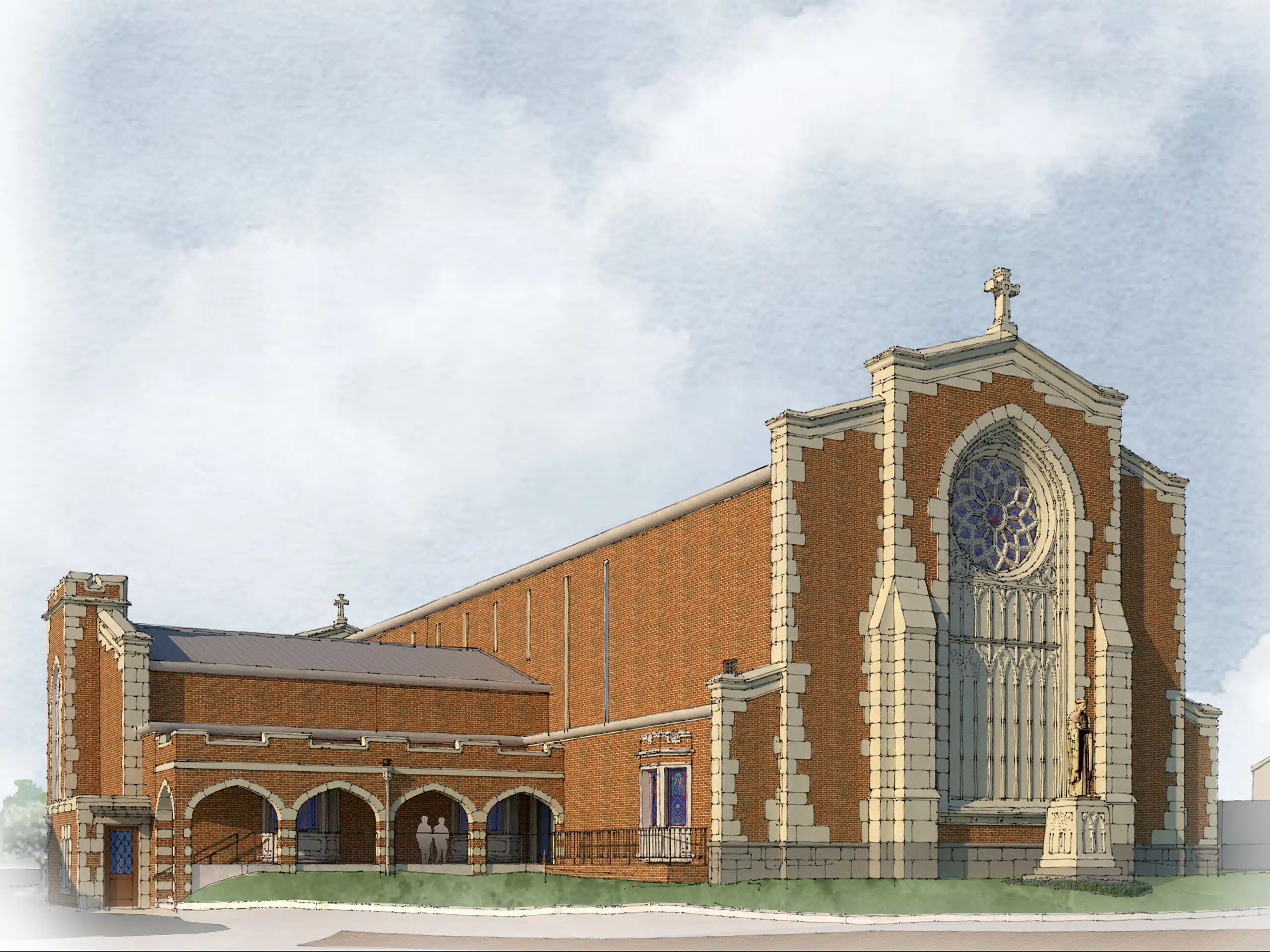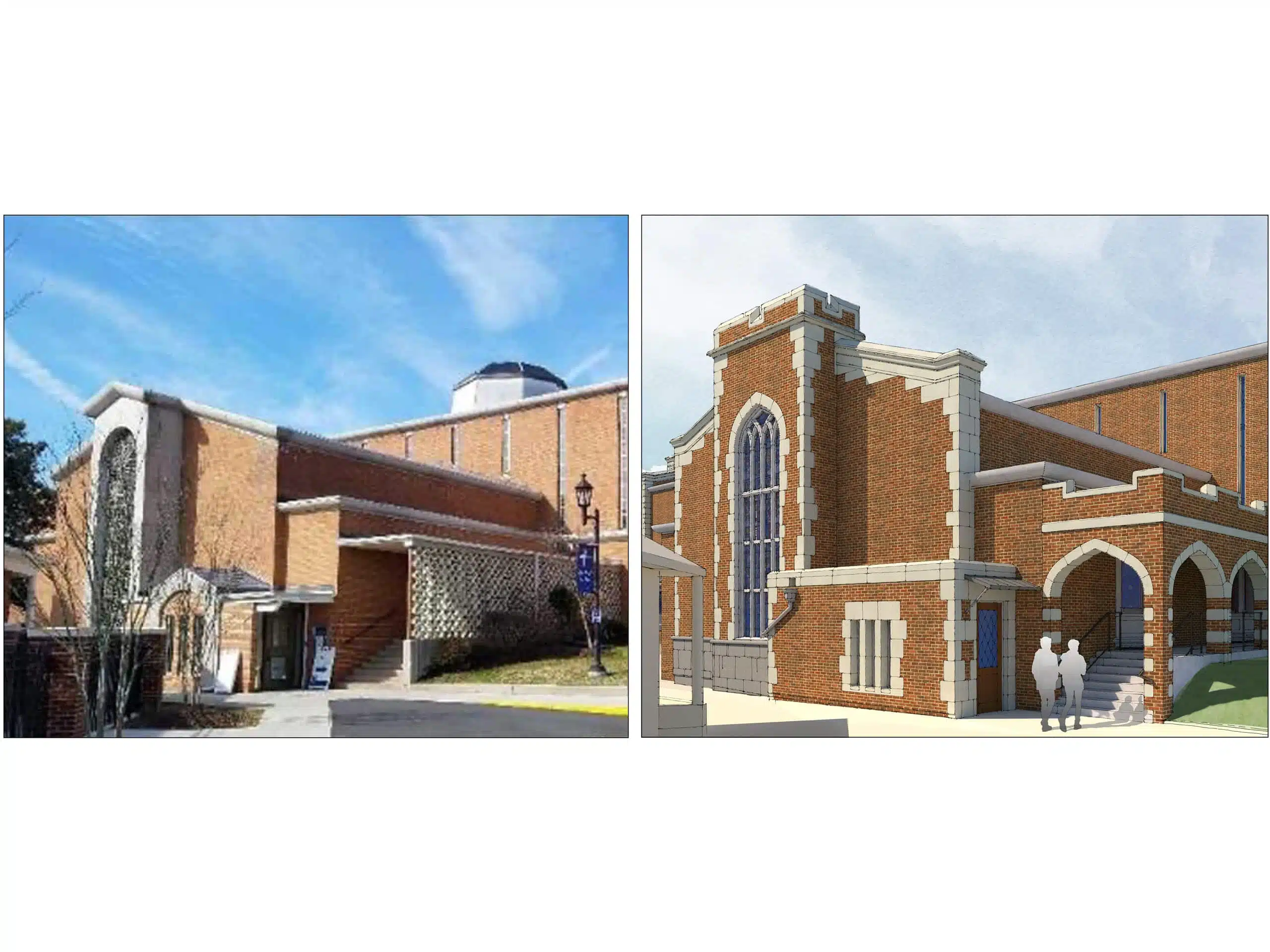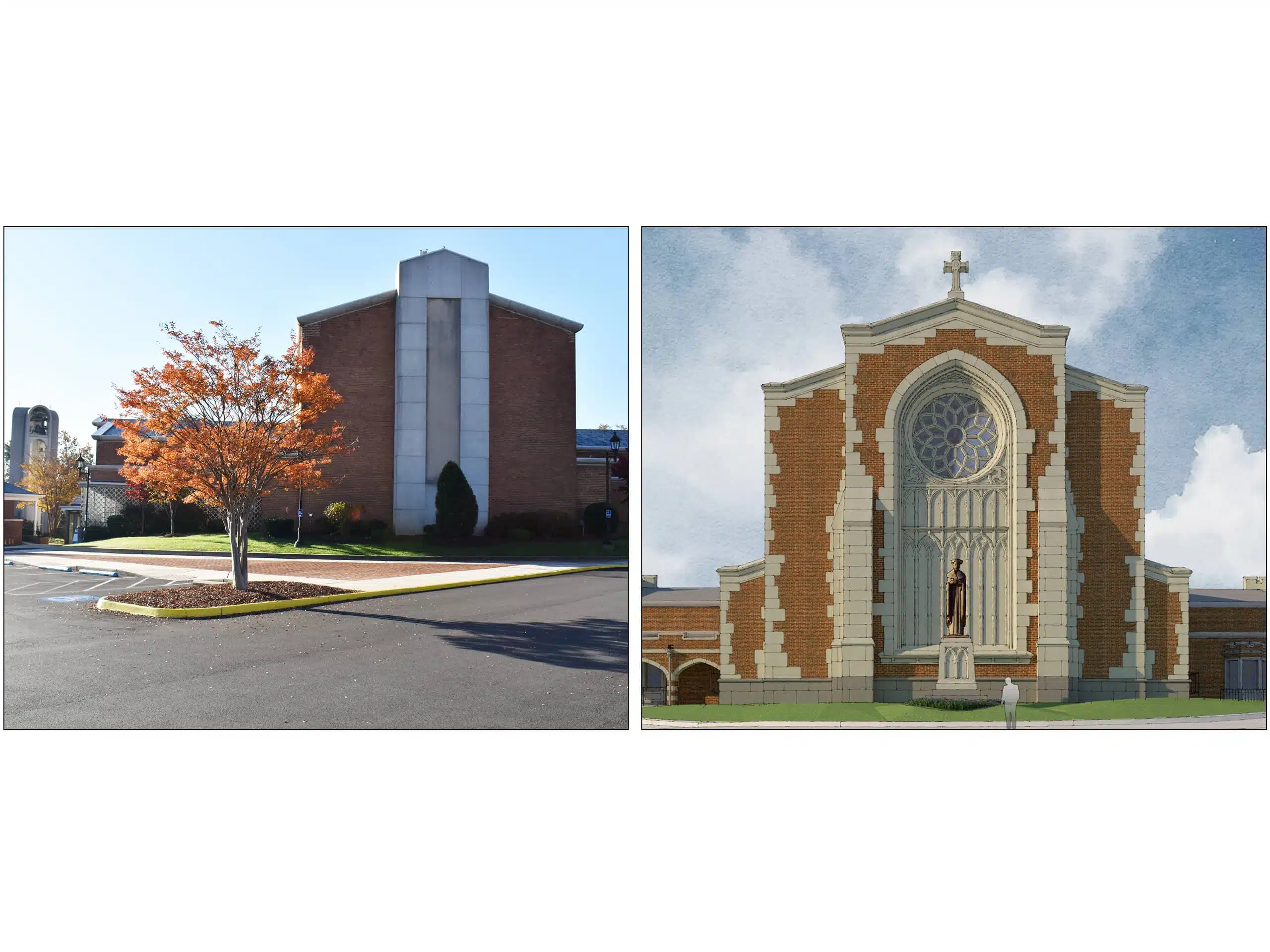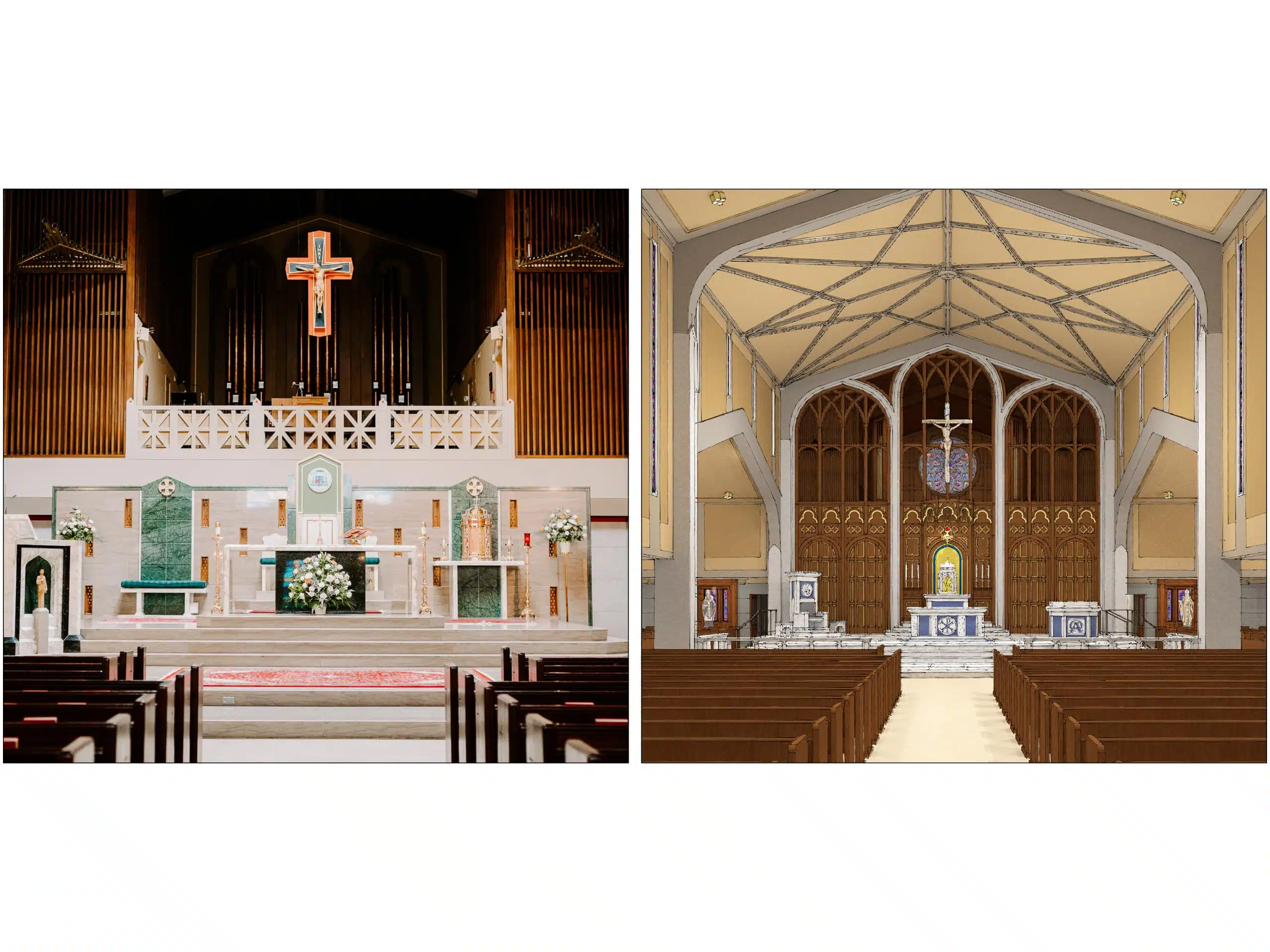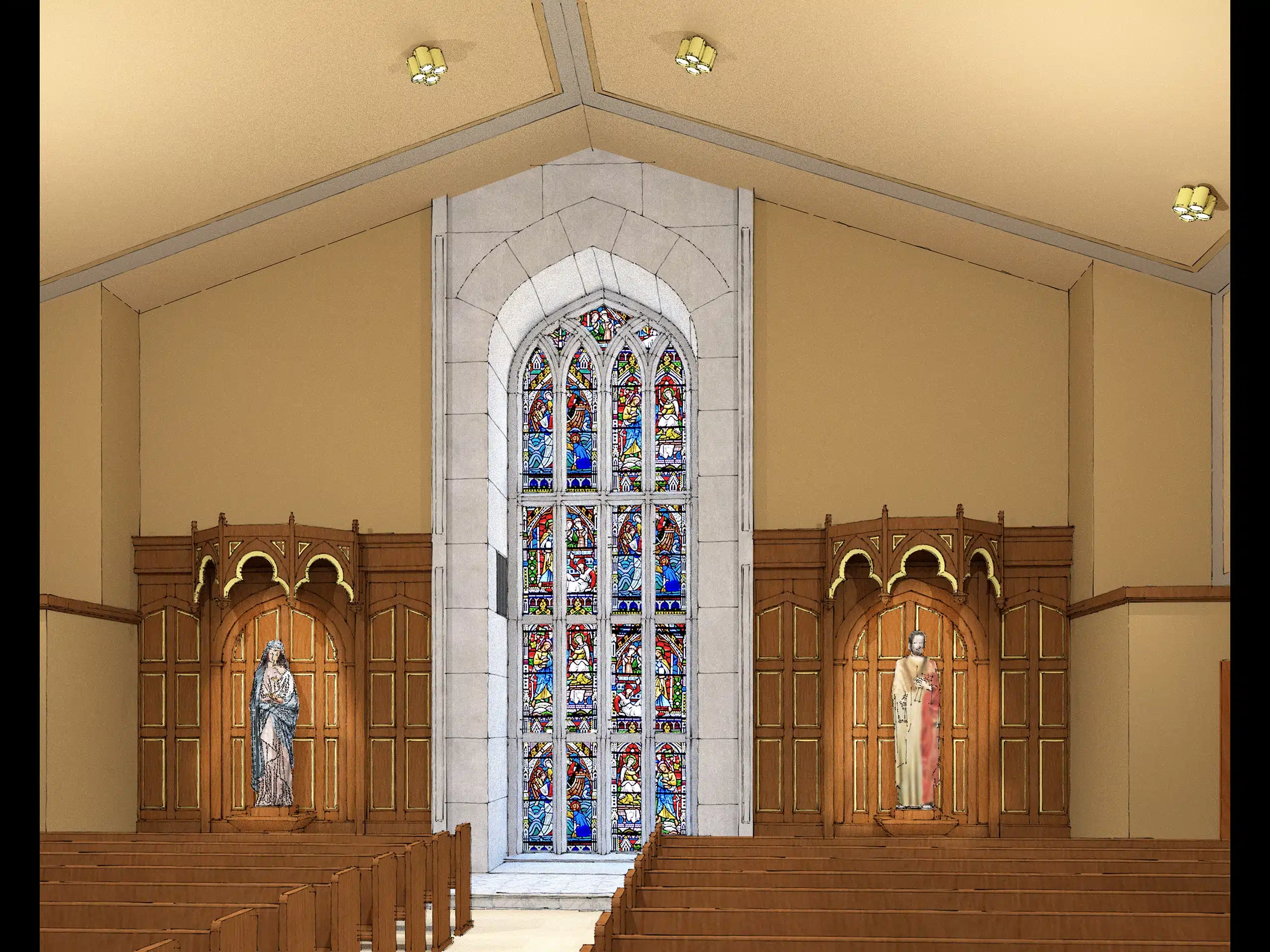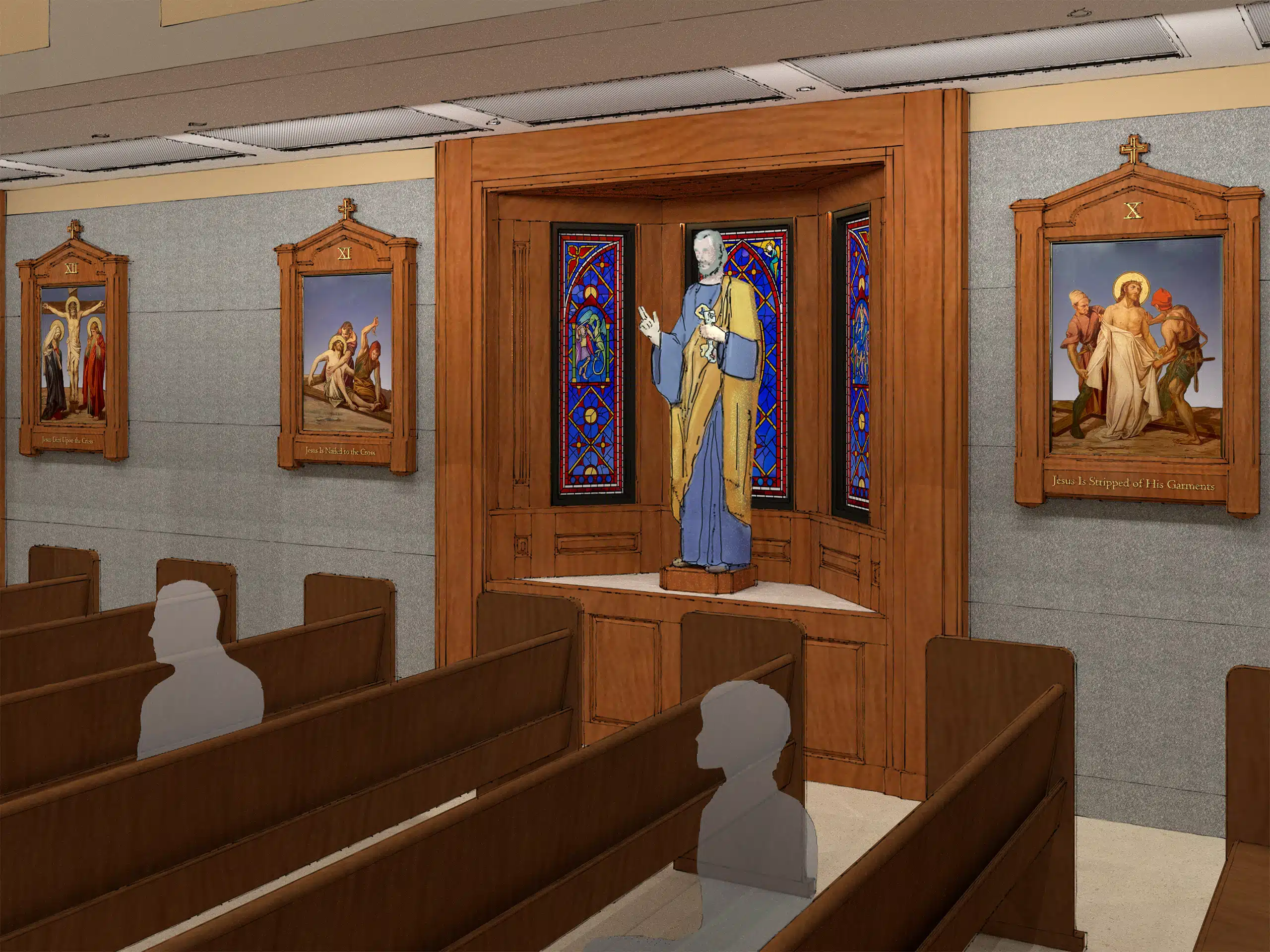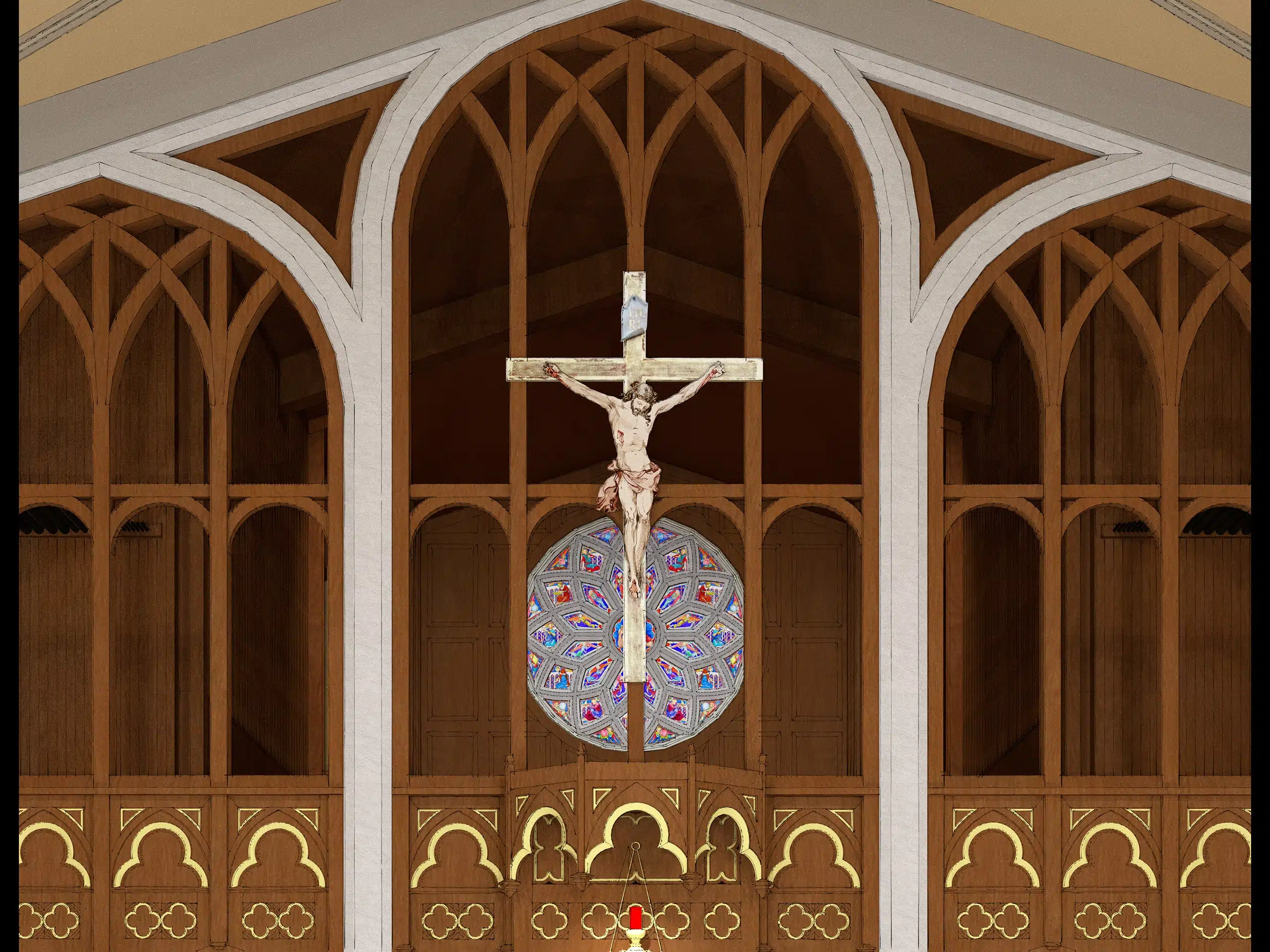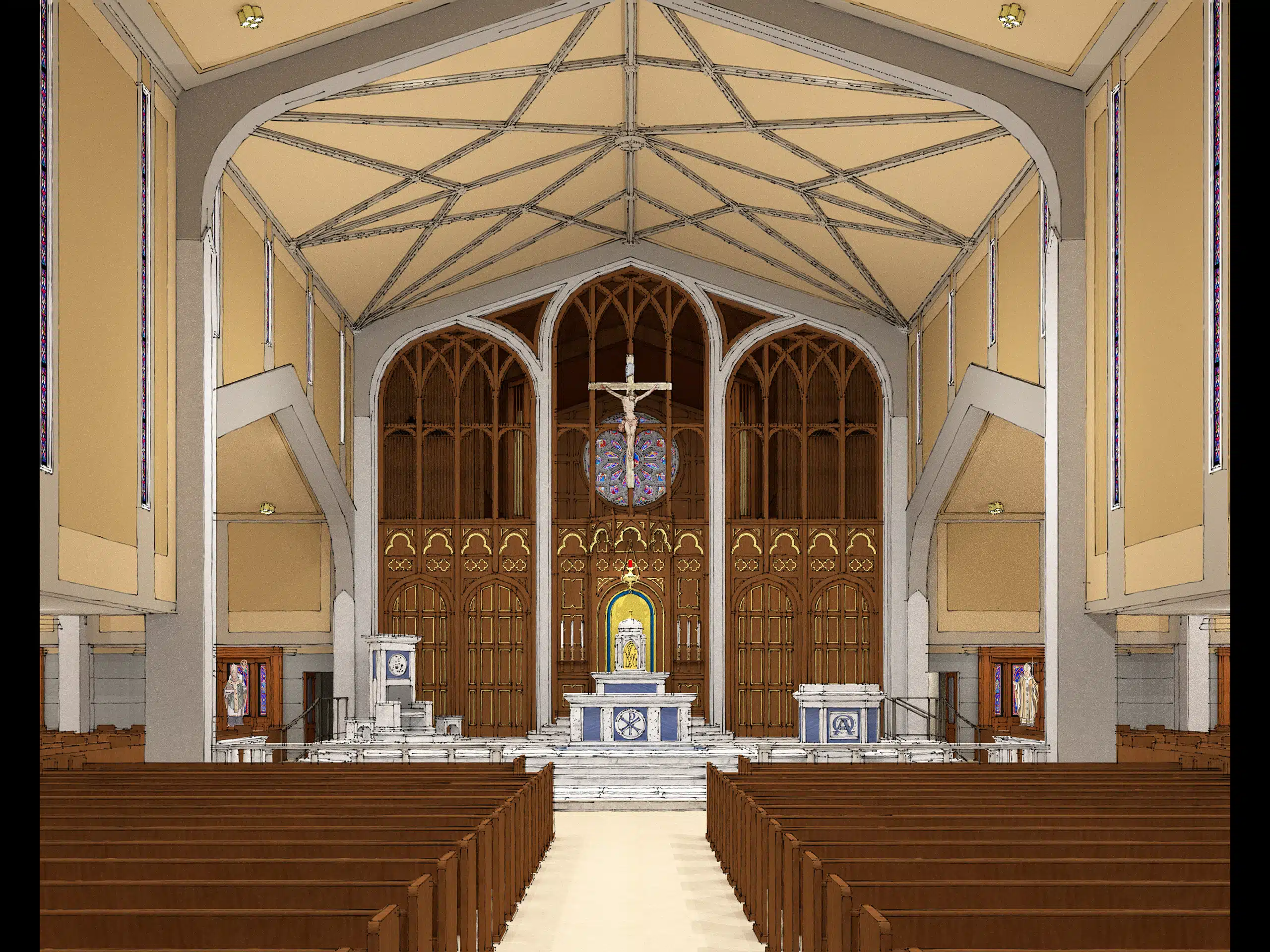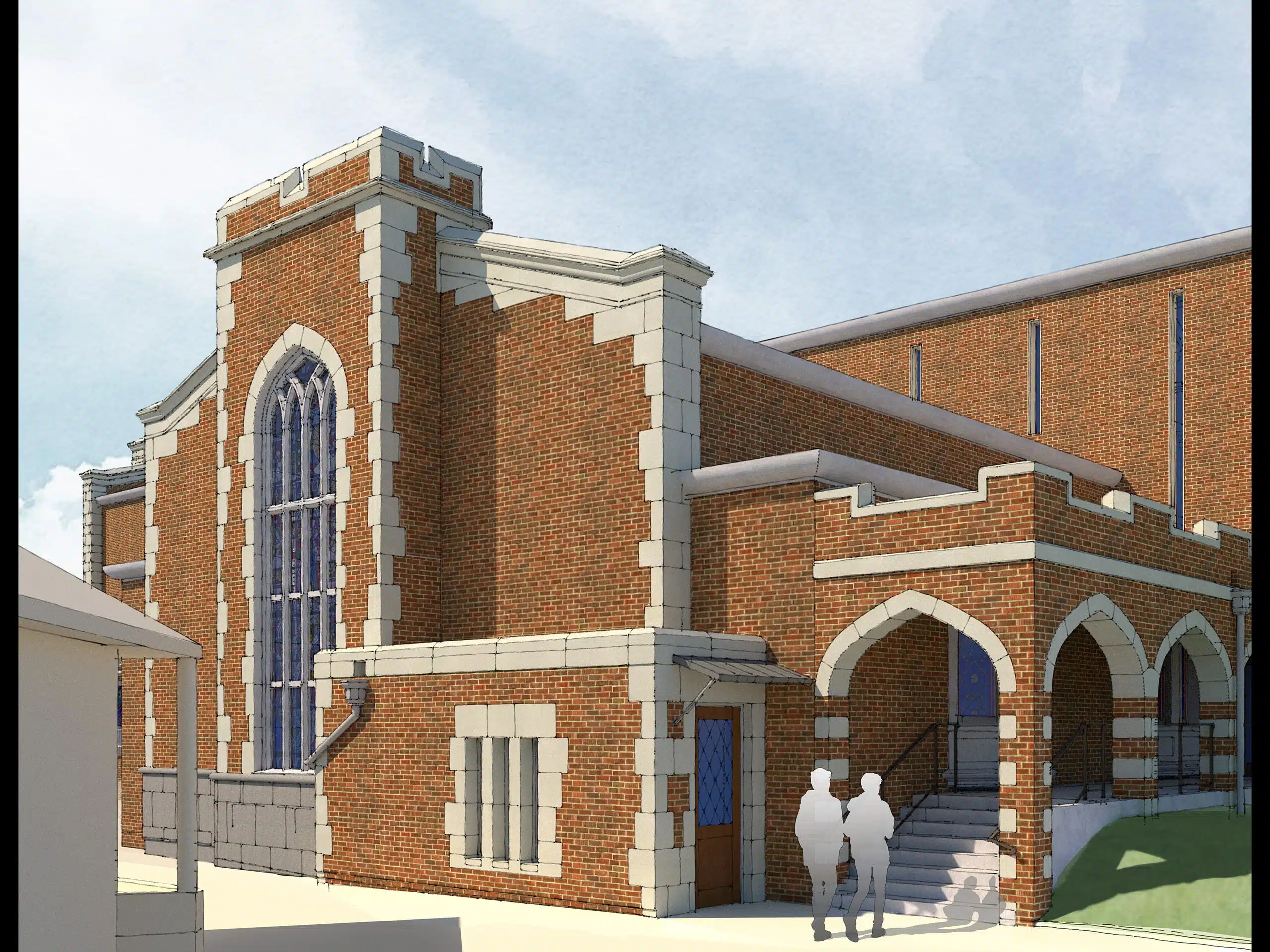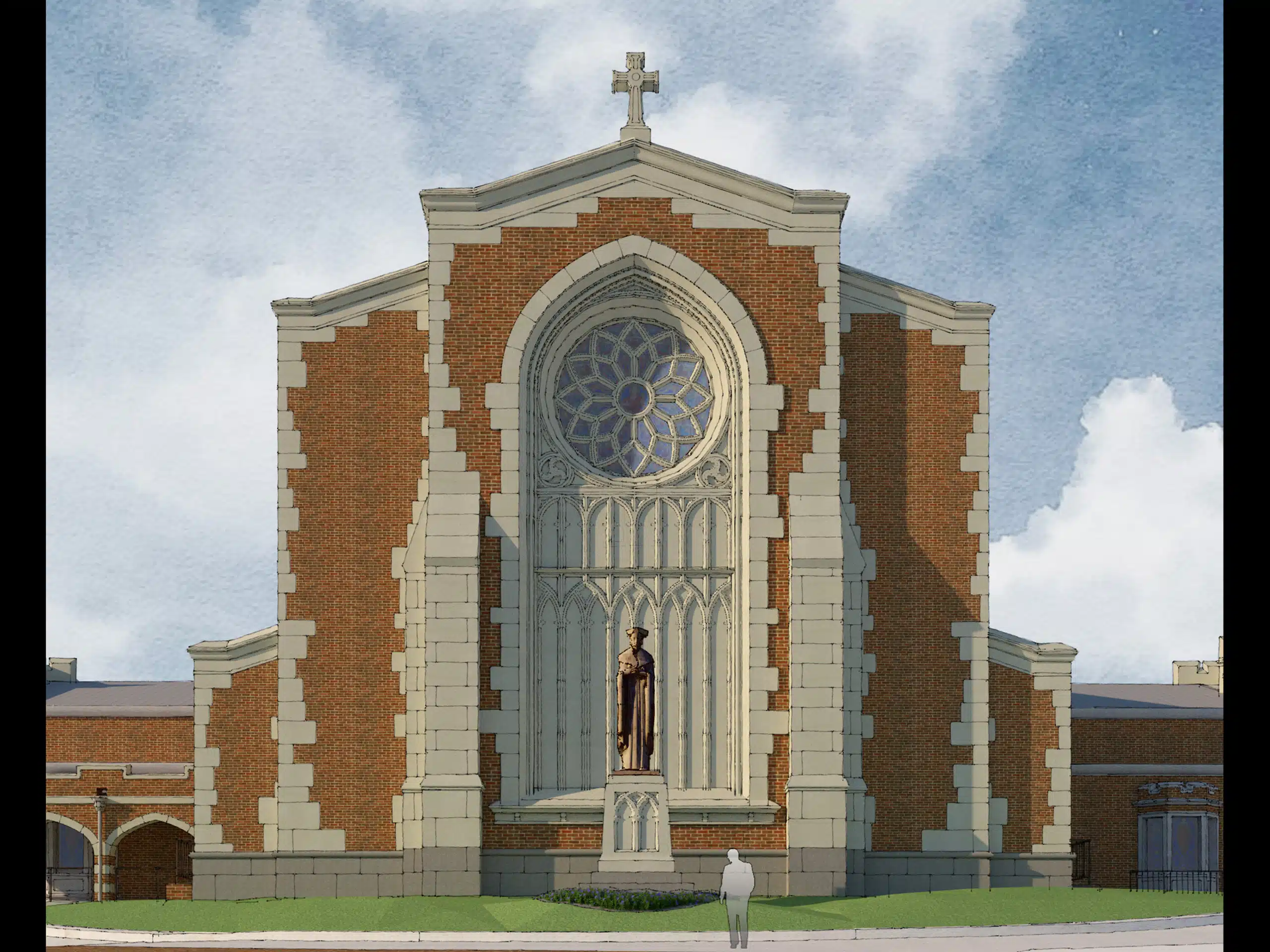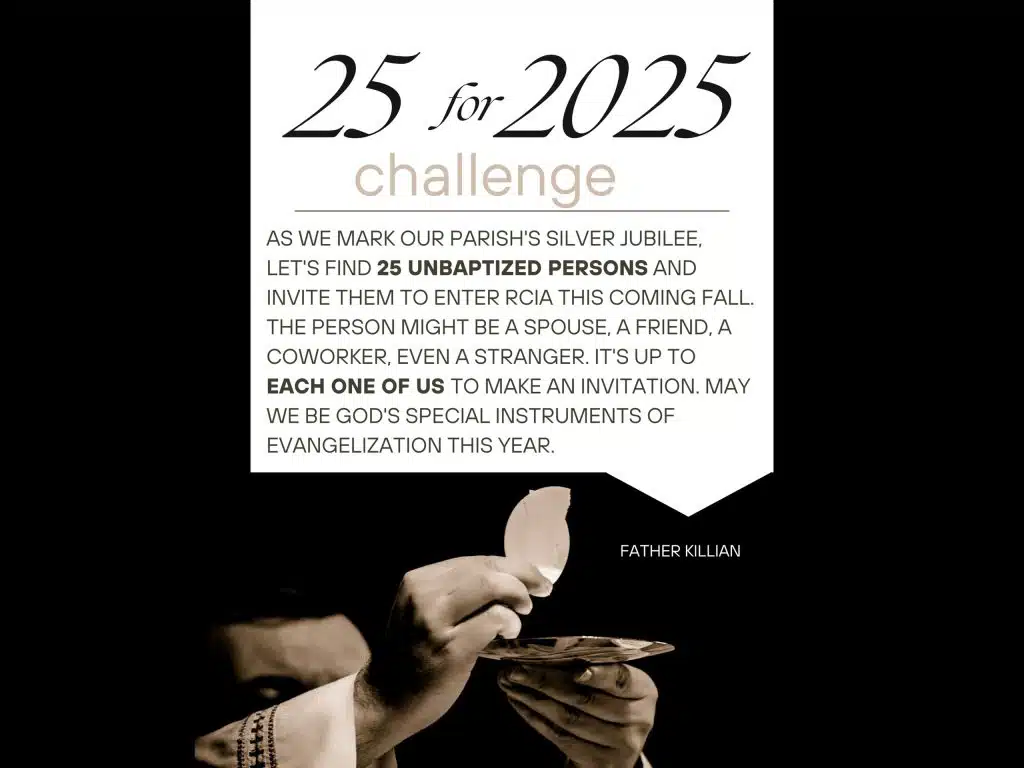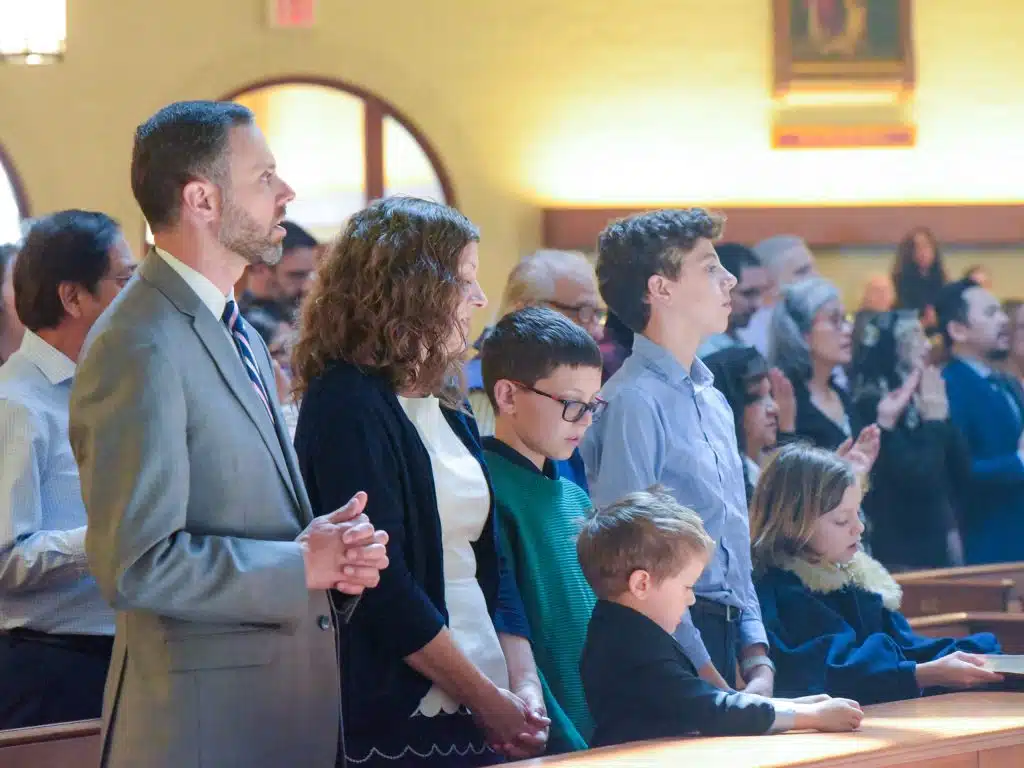When a new diocese is founded, an important consideration is the location and naming of its cathedral. When a diocese is formed out of an existing diocese, often a parish church is named as the new cathedral.
This was the case in 1974, when the Diocese of Arlington was carved out of the northern rim of the Diocese of Richmond. The parish of St. Thomas More Catholic Church on North Glebe Road in Arlington was designated as the cathedral of the diocese by Pope St. Paul VI.
The symbolism and role of a cathedral
The word cathedral comes from the Latin “cathedra,” which is the bishop’s chair and signifies his governance and pastoral ministry over the local church. The cathedral is where the cathedra is located and symbolizes the bishop’s pastoral care and his responsibility to teach, sanctify and shepherd the entire diocese. For that reason, the cathedral should set the standard in the diocese for clarity of teaching, the noble and beautiful celebration of the church’s liturgies, and the joyful exercise of pastoral charity.
The cathedral also serves as a principle of unity for the entire diocese. In addition to being a parish church, it should also be considered home by the faithful from throughout the diocese. Indeed, in the Diocese of Arlington, many gather there for celebrations, such as adult confirmation, multicultural liturgies, the Mass for Marriage Jubilarians, and others. The cathedral is a sign of unity shown most especially at the Chrism Mass and also at ordinations, when the bishop confers the priesthood and diaconate on men who are to serve throughout the diocese.
Truth and beauty complement each other. The beauty of a cathedral should speak to the beauty of the Catholic faith, not only to the faithful but also to all who pass by. Its beauty should prompt a sense of awe and draw people to the truths it signifies. Thus, the cathedral becomes a means of evangelization.
Anyone who has entered any of the wondrous cathedrals or basilicas in Rome will recall the experience. A beautiful cathedral is intended to reflect not so much the artisans who shaped the stone or brushed the paint, but instead, the inspiration for their work.
“The cathedral is the mother church of the diocese, the church from which all others take their cue. As the bishop’s church, it is the place to which all should be able to look to encounter the truth and the beauty of the Gospel,” said Father Paul D. Scalia, diocesan episcopal vicar for clergy.
Sandy Dominick, a member of the Diocesan Pastoral Council, said, “When we come to our cathedral from across our diocese of 70 parishes, we gather to make new friends, to share in the liturgies, to grow in holiness, to walk closely with God and to fulfill our baptismal promises through the gifts and love Jesus gives us in the sacraments shared with one another. Then we are sent forth to share his love in our own environments.”
Additionally, a cathedral is a beacon of hope. With timeless architecture and art, it is a reminder that while times change, God’s promises never change nor do the truths he has taught us. People can look at the church and know that we stand upon the bedrock of faith and rely upon God’s eternal word.
Renovations are coming
For all these reasons, after much prayer, deliberation and consultation, and in preparation for the 50th anniversary of the diocese, Bishop Michael F. Burbidge decided to renovate the Cathedral of St. Thomas More.
Prior to such a large project, Bishop Burbidge sought the counsel and input of many different groups in the diocese, including the Presbyteral Council, the Diocesan Pastoral Council, the Finance and Building Commission, the Cathedral Pastoral and Finance Councils, and the Diocesan Finance Council. Each group provided sound advice and support for this project.
The exterior stonework of the cathedral will be redone in a Tudor style. This is in honor of the era in which our patron St. Thomas More lived.
Inside the cathedral, the most significant change will be the design of the sanctuary. Previously, the bishop’s chair was in the center and the tabernacle to the side. The new design will place the tabernacle — in which our Eucharistic Lord resides — in the center. This simple but significant change returns to the original layout of the church prior to its elevation as a cathedral. More importantly, it gives a physical, architectural expression to the centrality of the Eucharist in our lives.
“It is in Christ, and his gift of the Eucharist, which we find true happiness,” said Father Patrick L. Posey, cathedral rector. “Placing the tabernacle where his sacrificial love for us is offered reinforces this centrality of our relationship with him. The tabernacle can be seen, then, as an invitation to worship and converse with Jesus; moreover, it is an invitation to witness — to become, as our patron saint reminds us, ‘God’s servant(s) first.’ ”
The cathedra will be relocated to the left as one faces the sanctuary, arranged in such a way that the bishop can see the faithful gathered in the church and thus preside over Christ’s flock. Further, the sanctuary will be redone in marble. The beauty of the stone and its design sets the sanctuary apart and emphasizes the importance of what happens there. The location of the choir loft will remain unchanged, behind the sanctuary.
“So closely connected to the celebration of the liturgy is the use of sacred music, which is an integral part of the liturgy and is at its service,” said Father Michael D. Weston, diocesan director of divine worship. “When it is truly sacred, familiar and joyful, it can assist to raise up the minds and hearts of everyone present toward heaven and to true worship of almighty God.”
Devotional shrines with statues
The new cathedral design will have devotional shrines with statues of various saints. Because the cathedral represents all the faithful of the diocese, these shrines will represent the different cultures and communities located throughout the diocese. Behind each statue will be stained-glass windows that tell the story of that saint’s life. The cathedral will exemplify both the oneness and the diversity of the diocese — that our one body has indeed many parts.
“Representatives from the various cultural groups in the diocese are thrilled to have this opportunity to leave a lasting thumbprint on our Mother Church,” said Bridget Wilson, diocesan director of multicultural ministries. “The saints they have chosen are amazing witnesses to the faith and will be a constant reminder to all who visit that, though many, we are one body in Christ.”
Opportunities will be made for individuals or families to memorialize a loved one, couple or family. For any interested in doing so, please contact Robert Mueller, director of development, at [email protected].
Renovation funding
Bishop Burbidge had three essential principles for the funding of this project, all of which have been achieved: that no debt would be incurred for the renovation, that no assessments would be taken from any parish, and that there would be no capital campaign for this project.
To raise the funds, Bishop Burbidge met personally with donors who generously agreed to give to the project beyond their normal contributions to their parishes, the diocese and Catholic Charities. Thus, no funds are being drawn from parish or diocesan accounts, including offertory and the Bishop’s Lenten Appeal. The project is following the same financial policies and requirements as those expected of parish construction projects.
As part of the 50th anniversary celebration in 2024, the diocese will conduct a capital campaign for charitable works to help those in need.
Who is the architect?
The architect is Jim O’Brien of O’Brien and Keane Architecture, an Arlington-based firm that has extensive experience with major renovations and construction in Catholic settings throughout the country. As a long-time parishioner of St. Agnes Church in Arlington, he has completed dozens of projects in the diocese over the past 20-plus years.
“The cathedral project has been a great opportunity to consider the incredible architectural heritage upon which we as Catholics have to build,” O’Brien said. “Our team spent some time studying historical precedents and considering how certain solutions might be re-imagined and translated into a unique architecture for Arlington in the 21st century. The scope of the project has allowed us to work toward design consistency, inside and out, so that the building might have a unified expression. I think that it’s fitting that the unity of the cathedral design reflects the unity of the church here in the diocese.”
The construction company is Forrester Construction, which has provided excellent construction services in the diocese.
Rose Window/Stained Glass
The north façade of the cathedral facing Glebe Road will be rebuilt and will include a rose window depicting the theme of “The New Jerusalem” as found in Revelation 21. In the center, rendered in stained glass, will be the image of Our Lord. Surrounding this central image will be stained-glass depictions of 12 gates with 12 angels. The next ring of stained glass will depict 12 walls with the 12 apostles. Twelve precious stones will be represented in the outer ring.
It is the hope that all those who travel along Glebe Road throughout the day will be drawn to the beauty of the rose window and will be inspired to seek its deeper meaning in their lives — the salvation offered in the Lord, who is the Lamb slain for our redemption, and who invites us to follow after him to live eternally in the New Jerusalem.
In addition to the majestic presence of the rose window, the renovated cathedral will also contain numerous stained-glass windows decorating the walls in the east and west transepts as well as the south wall, which faces Arlington Boulevard. The images in these windows will include the life of the Holy Family, and depictions of Mary, St. Joseph, and the saints for whom parishes throughout the diocese are named.
The renovation of the sanctuary will also reflect the centrality of the Eucharist in our lives by relocating the tabernacle to the center just behind the main altar. Placing the tabernacle as a focal point in the sanctuary will serve as a visual reminder to all who enter the cathedral that the precious gift of the Blessed Sacrament is the “source and summit” of our lives.
“As a bishop, I have the privilege of traveling to many other dioceses, particularly in our region, and witnessing the beauty and majesty of their cathedrals. It has been clear to me for some time that, for the benefit of the faithful, a cathedral renovation would more accurately reflect our devotion, love of God and evangelistic spirit. I pray that the coming changes to St. Thomas More Cathedral will be a blessing to our entire community, where all feel welcome to join as brothers and sisters in faith, to worship God and receive the gifts of the Holy Spirit.”
Bishop Michael F. Burbidge
What’s next?
Construction will continue over the next year. Updates will be shared in the Catholic Herald as progress is made.
Be sure to check out ArlingtonDiocese.org and diocesan social media for all the latest videos, photos and more from the project.
